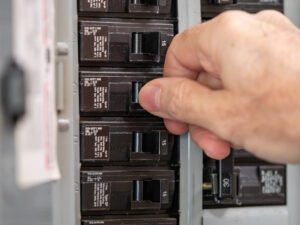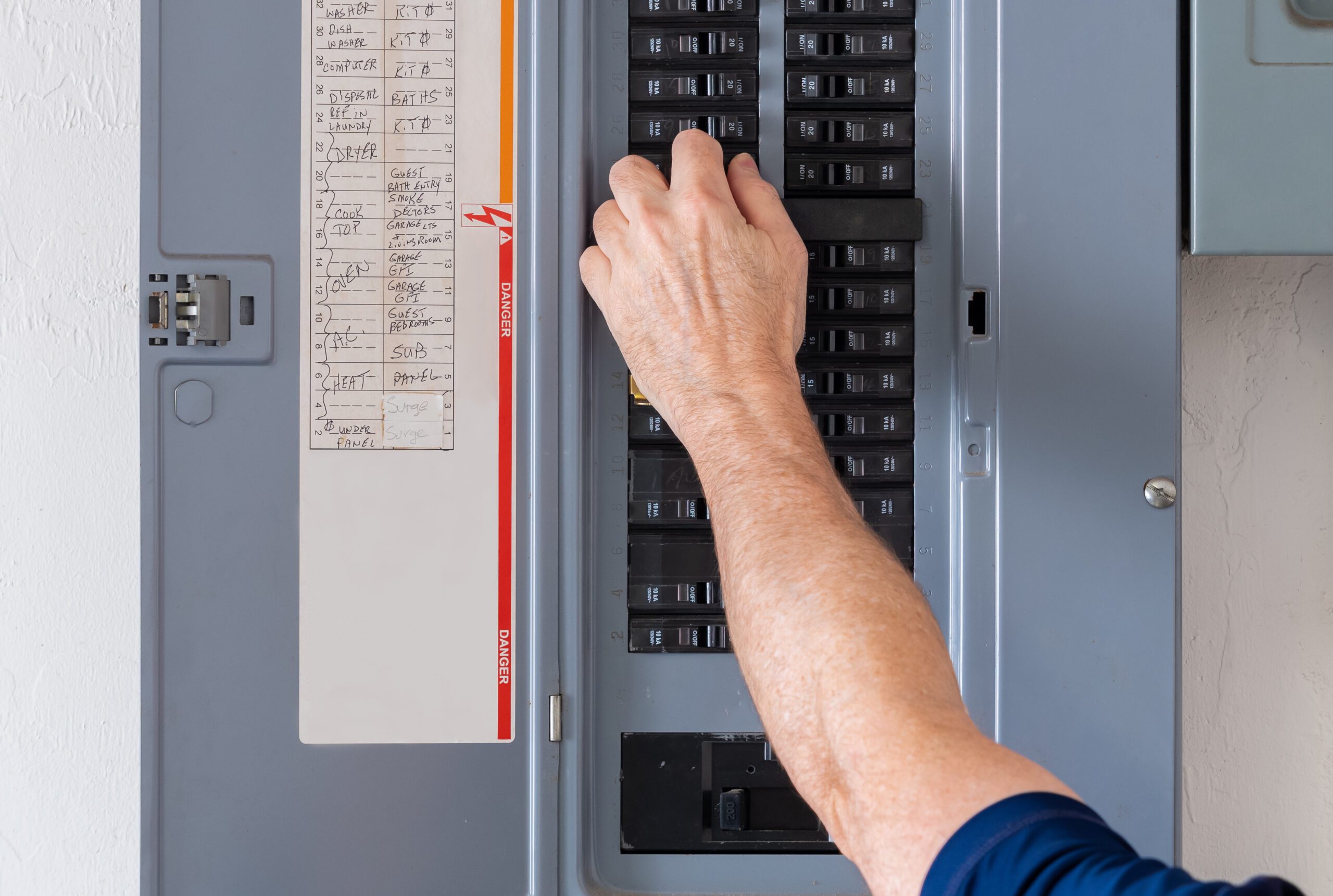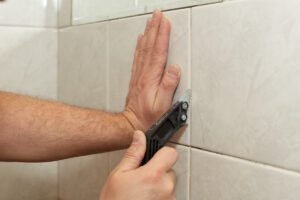Introduction
Understanding your electrical panel and its basic functions is an important skill every homeowner should have. I’m not suggesting everyone become a DIY electrician, or even attempt something you are not comfortable with. However, by gaining a basic understanding of your breaker box and associated components, you should be able to troubleshoot simple electrical issues without calling in an electrician. Take some time to familiarize yourself with some of the common brand names such as the Siemens electrical panel, the Square D electrical panel, or Eaton, etc. This could be important if you need to contact an electrician, he may ask what style panel you have.
What is an Amperage?
Have you heard anyone ask, “Do you have a 200-amp electrical service?” and not know what they are talking about? This is one of the key reasons you should understand your electrical pane.. Having a conceptual understanding of what amperage is, is key to understanding your electrical system.
Amperage is a term that describes the flow of electricity, much like how we might describe the flow of water in a river. If you imagine electricity as water flowing through pipes (or in this case, wires), amperage represents the volume of water flowing per second.
In the context of our homes and this article:
- High Amperage:
It’s like a fast-flowing river, capable of powering many devices or large appliances simultaneously. This is what we see in larger homes, (like 3,000 sq ft and above) with many electrical appliances and systems. A higher amperage service (like 200 or 400 amps) means the home can handle more electrical demand at once.
- Low Amperage:
Think of it as a small stream, suitable for fewer or smaller devices. Older homes or smaller residences (like 1,500 Sq Ft and below) might have a 100-amp service, which is adequate for basic needs but might struggle if too many devices are used at once.
Just like a river can overflow if there’s too much water, electrical wires can become overloaded if there’s too much amperage. That’s why homes have specific service capacities, ensuring a safe and efficient flow of electricity.
Where is Your Electrical Panel Located?
Depending on the climate where you live, the age of your home, or how your home is constructed, the panel could be located in a few different locations. If you are about to move into a new home, here’s a list of where you might find the main electrical panel based on your situation:
- Basement:
Many homes, especially in colder climates, have their electrical panels located in the basement. This provides easy access while keeping the panel out of the main living areas.
- Garage:
In homes without basements or in warmer climates, the garage is a common location for the electrical panel. It’s easily accessible yet out of the way of daily activities.
- Utility Room or Closet:
Some homes might have the electrical panel in a designated utility room or a specific closet, often near the laundry area or water heater.
- Exterior Wall:
In some homes, especially in warmer climates or multifamily dwellings, you may have an outdoor electrical panel. In such cases, it’s usually housed in a weatherproof box.
- Hallways:
Occasionally, especially in older homes or apartments, you might find the panel located in a hallway, often behind a small door or cover.
- Staircases:
Sometimes, the space under staircases is utilized for electrical panels, given its typically unused nature.
The Components of an Electrical Panel
Every home’s electrical system has a few common elements.
- Main breaker:
The primary controller of power flow. If you ever need to shut off electricity in your entire house, this is the switch to throw. You will have to open the electrical panel cover to see where it is. It’s usually located at the top and center of the panel behind the electrical panel door. You will see a number under the beaker switch such as 150, 200, 300, et… This represents the total amperage your system is capable of handling. So, if the main breaker has the number 200 marked on it, you have a 200 amp electrical service.
- Individual circuit breakers:
Specific to various areas or devices. Each type, be it a Siemens electrical panel, Square D electrical panel, or any other brand, has its unique layout and features. If you ever need to replace a circuit breaker, you need to make sure you know what brand the box is. Circuit breakers are not universal, a Square D breaker may have a different mounting mechanism and might not fit on the bus bar of a Siemens Panel.
I’m not recommending doing anything more than simply resetting a tripped breaker yourself (discussed below). However, if you are calling an electrician for a particular problem or project, it’s good to know what your service capacity (Amps of your main breaker) is and what type of electrical panel box you have. You should not have to remove the front cover, manufacturers typically place their logo or name on the outside of the panel’s door or cover for easy identification. When you open the panel door, you might also find a label inside with more detailed information about the panel, including its make, model, and specifications.
Labeling:
If you are buying an older home, I can almost guarantee that your circuit breakers are labeled incorrectly, or at least labeled with poor descriptions of what they control. I’m currently in the midst of remodeling my daughter’s town home that was built in the 1980’s. The electrical panel, to say the least, was a mess!
Always ensure your electrical panel labels are clear and up to date. This will make troubleshooting much easier for you, or an electrician. I highly recommend taking the time to verify your electrical panel labeling. Have a friend with a cell phone walk around your house while you are standing in front of the electrical panel. Start flipping switches one at a time starting from the top to the bottom, and have your helper verify if the labeling matches what turns off. Remember to flip the breaker back on before moving to the next switch.
Take the time to clean up your labeling with some cool labels. Here’s a colorful option from Amazon!
Circuit Breakers: What They Do!
Protection is the primary function of circuit breakers. If an overload or short circuit occurs, these devices trip, cutting power and preventing damage.
Tripped Circuit Breakers – What to Do!
A tripped circuit breaker can often be identified by its position in the electrical panel. Unlike the other breakers that are either firmly in the “ON” or “OFF” position, a tripped breaker will typically be resting somewhere in between, often leaning more towards the “OFF” side. Some newer breakers also feature a visible red or orange indicator to signify they’ve tripped. To reset a tripped breaker, first, ensure that any immediate overload issues, like too many appliances running simultaneously, are turned off or unplugged. Then, push the breaker fully to the “OFF” position. After that, flip it back to the “ON” position. This action will reset the breaker, restoring power to the associated circuit. If the breaker trips again shortly after resetting, you need to identify and solve the underlying issue before attempting to reset again. Most of the time, it’s simply too many electrical items running at the same time on the same circuit.

Simple Trouble Shooting:
Troubleshooting a circuit that has a short circuit or ground fault requires systematic approach to pinpoint the problem. Here’s a step by step basic guide:
- Safety First: Turn off the main power to the circuit you’re troubleshooting. Wear rubber-soled shoes, avoid standing on wet surfaces, and use tools with insulated handles.
- Identify the Problem: If your circuit breaker has tripped or a fuse has blown, it’s a sign of a problem. A short circuit often results in a loud popping sound, and the breaker will trip almost immediately once it’s reset. A ground fault might not trip the breaker immediately, but it poses a danger as it can be a shock hazard.
- Inspect the Outlets: If the problem started after plugging in a particular device, begin your inspection at that outlet. Look for signs of burning, arcing, or any unusual odors. If you notice anything like this, contact an electrician immediately and do not reset the breaker.
- Unplug Devices: Unplug all devices from the problematic circuit. This includes lights, appliances, and any other connected items.
- Reset the Breaker: Turn the breaker fully to the “OFF” position and then back to “ON.” If it stays on, the issue might have been caused by one of the devices you unplugged.
- Isolate the Issue: Plug in one device at a time and check its operation. If the breaker trips when you plug in or turn on a particular device, you’ve likely found the culprit.
- Check Wiring and Outlets: If you can’t identify a problematic device, the issue might be with the wiring or an outlet. Look for loose connections, frayed wires, or damaged outlets. Wall switches can also be a source of short circuits or ground faults. If you are unsure about this step, contact an electrician, do not attempt to troubleshoot wiring if you are not confident in your ability to do so.
- Ground Fault Circuit Interrupter (GFCI) Outlets: If the circuit includes a GFCI outlet (common in bathrooms, kitchens, and outdoors), it might have tripped even if the main breaker hasn’t. Try resetting the GFCI by pushing the “RESET” button. If it doesn’t stay reset, there’s likely a ground fault in something connected to the outlet.
- Seek Professional Help: If you’ve gone through these steps and haven’t identified the problem or if you’re unsure about any step, it’s essential to consult a licensed electrician. They have the tools and expertise to diagnose and fix electrical issues safely and effectively.
Remember, electricity is dangerous, and while some basic troubleshooting can be done safely, always prioritize safety and know when to call in a professional.
Conclusion
Mastering the knowledge of your home’s electrical panel, from the cover to the labels, isn’t merely for convenience—it’s a safety imperative. Regular checks along with an understanding of basic home principles pave the way for a well-maintained home. Dive deeper into homeowner essentials with our Homeownership Essentials Guide.
FAQ Section
- What’s the difference between a fuse and a circuit breaker?
Fuses melt with overloads and need replacement, whereas circuit breakers simply trip and can be reset. Fuses are typically found in older homes, built prior to 1960 that have not been upgraded. - How often should I inspect my electrical panel?
At least annually, and immediately upon spotting any irregularities or issues. - What’s the average lifespan of a circuit breaker?
They usually last between 15-20 years, though it can vary based on the brand and usage.




